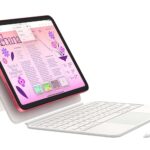Expert’s Rating
Pros
- Sleek and comfortable
- Excellent screen
- Plenty of tracking and features
- Fast charging
Cons
- No battery life improvement
- Can get very expensive
Our Verdict
Many layers of refinement make the Series 10 an excellent smartwatch with primarily, a stunning new display. Overall it’s the sweet spot of Apple’s range. It’s not perfect, but if you want one of the latest models it’s a no brainer for most people.
Price When Reviewed
This value will show the geolocated pricing text for product undefined
Best Pricing Today
Price When Reviewed
$399
Best Prices Today: Apple Watch Series 10 (42mm)

$329

$329

$349
399

$399.99
Apple’s smartwatch has reached the ripe old age of 10 and has a selection of upgrades to celebrate. Is ‘Thinstant classic’ and appropriate tagline for the Apple Watch Series 10 though?
Instead of the ‘X’ overhaul that the iPhone saw when it hit 10, the Series 10 is largely more of the same, though refinement at this stage is understandable.
A larger and more impressive screen, thinner body, new colours and an optional Titanium model make it the most desirable Apple Watch yet and may even convince you an Ultra is overkill.
Let me explain why the Apple Watch Series 10 is the sweet spot of Apple’s smartwatch range.
Design & Build
- Thinner & lighter
- Jet Black colour
- Titanium option
A possible design overhaul for the rumoured ‘Series X’ didn’t happen but the Series 10 has still had more refinement that first meets the eye.
It certainly looks very much like its fore bares and I still personally prefer a circular smartwatch, but the square design has advantages, of course.
The Series 10 is the thinnest Apple Watch ever at 9.7mm which is a full millimetre less than the Series 9/8/7. It makes it feel more snug and helps it fit under clothing etc.

Dominik Tomaszewski / Foundry
Other dimensions are slightly tweaked, too so this comes in 42- and 46mm sizes rather than 41- and 45mm. It mainly allows for a larger screen which I’ll talk about later.
Apple has slightly simplified the finished for the Series 10 which, for the aluminium option, comes in silver, rose gold and jet black. I’ve been testing the latter and I’m very fond of its stylish polished look.
Part of the redesign includes a new speaker grille which I think looks nice with its tiny holes but isn’t something you’ll see often.
Those wanting the Titanium edition (for more money) can choose slate, gold and natural. This replaces the Stainless Steel model of the Series 9.

Dominik Tomaszewski / Foundry
Despite not loving this square design of the Apple Watch, I have found it extremely comfortable – day and night. Apple sent a fabric Sport Loop band with the watch and an excellent all-rounder. There are, of course, loads of strap options and you can change them quickly and easily for different usage.
As usual Apple is very good with its use of recycled materials with plenty of parts made from 100% recycled aluminium, rare elements, tin, copper and more. The titanium model is made from 95% material for the case like the Apple Watch Ultra 2.
As usual, the Series 10 is water-resistant to 50m and swimproof. It’s extremely durable and in a month of wear I can’t see a single scratch or otherwise.
Screen & Speaker
- Even bigger
- Wide-angle OLED
- 1Hz refresh rate
- Media playback
The screen is the biggest hardware upgrade this year and, in fact, is now larger than the Ultra 2’s if you select the 46mm case size (despite the Ultra being 49mm). There’s still a smaller 42mm option if you prefer but I’m testing the larger version here.
Apart from the increased size, with only a marginally bigger case, which allows an extra line of text, the new screen is much better in a couple of key areas.
It’s still very bright, crisp and colourful as you would expect, but now has a Wide-angle OLED panel which Apple says is up to 40% brighter when viewed at an angle.
Note that not even the Ultra models have this, though the Ultra 2 can go 50% brighter at 3,000 nits.

Dominik Tomaszewski / Foundry
The panel does indeed make the Series 10 easier to use without having to look directly at it. It means I can glance at the time or a notification without having to move my wrist at all.
The other big upgrade is the display’s 1Hz refresh rate. If you’re used to seeing phones and tablets rated at 90-, 120Hz or even higher then this might seem strange. Phones typically go down to 1Hz to conserve battery power but on the Series 10 it enables watch faces to have a ticking second hand or equivalent.
1Hz means it refreshes once every second making it perfect for this. However, very few of Apple’s official watch faces can take advantage of it.
Still, it’s one of the best displays on a smartwatch to date, even if I do personally prefer round ones.
The speaker is decent though I personally didn’t find myself using it much. Phone calls on a watch are not my thing and although you can now use it for media playback, again, I don’t see the appeal.
Fitness & tracking
- ECG
- Sleep tracking with apnoea
- Heart rate and much more
This isn’t an area where a whole lot has changed on the Series 10 compared to previous generations but that’s not a bad thing. At this age, it’s understandable that Apple has got it all together.
As expected, the smartwatch has plenty of sensors and clever software to track all kinds of things from steps to heart rate to training load.
Apple isn’t forceful with most of the fitness and tracking features which I like, though some could go unnoticed if you don’t go searching. Vitals is one I never really used, partly as battery running out and forgetting to charge results in not enough data.
You can use it as simply as a cheap fitness tracker via the activity rings or for much more complicated workouts and training if you like.

Dominik Tomaszewski / Foundry
I’ve found the Series 10 a joy to use in these ways, where others can often be too pushy with making you hit targets or overly complicated in how data is presented.
One key change is that you can pause the activity rings so you don’t overdo it for the sake of gamification and also set different goals for different days of the week (eg the weekend). The result is a more balanced approach.
The tracking is accurate and largely you don’t have to do anything other than wear the device. It really does the rest unless you want to specifically take an ECG or something.
One thing that’s different compared to non-Apple smartwatches and smart rings is stress tracking, at least not natively though I believe you can get third party apps for this. However, it’s not something I’ve found useful elsewhere anyway with erratic stats.

Mike Sawh
I should add that I’m not a fitness fanatic and my exercise is typically walking the dog and chasing a toddler round a playground. However, a regular contributor to Tech Advisor tested the Series 10 alongside an Ultra 2 for a half marathon and it came out very close indeed.
When it comes to sleep tracking, you get the usual kind of data including overall time and a breakdown of sleep stages. I would say it’s on the more generous end of the spectrum, typically stating I was asleep within seconds of hitting the pillow when I know full well I was still awake – though this approach is better for the placebo feeling in the morning so I’d rather this than the opposite.
A new feature is sleep apnoea notifications which can help identify the condition, though it will consume more battery. On a regular night without it, I found battery would go down 10%.
Performance & Features
- S10 SiP
- Depth gauge & water temperature
Unlike the iPhone 16, I’ve had no performance issues or glitches like random reboots etc. The smartwatch runs very smoothly indeed and doesn’t struggle with any tasks I’ve asked of it.
The new S10 SiP is clearly up to the job so I’ll swiftly move on to talk about some of the features available on the Series 10, some of which are news.
Swimmers and snorkellers will enjoy a previously Ultra-exclusive feature in the depth gauge which automatically activates when you’re in water, though it only works to 6m rather than the 40m the Ultra 2 is capable of.
The Series 10 also has a water temperature sensor which you might find useful.

Dominik Tomaszewski / Foundry
Plenty of existing features are still available including Emergency SOS, Fall- and Crash Detection. None of which I’ve needed gladly but it’s nice to know it’s there.
On the software side, watchOS 11 works very well and is mostly intuitive. If you’re coming from another smartwatch operating system then it will take a little while to learn your way around.
In general, your notifications are a swipe down from the top and swiping up or turning the crown summons the Smart Stack which is a collection of card-style widgets with information and shortcuts such as weather, activity rings, photo memories and more.
Of course, you can customise which widgets you want in there and what order they appear.

Dominik Tomaszewski / Foundry
Press the digital crown and you’ll see the icons of all your apps, many of which you’ll have to learn if it’s your first Apple Watch. I like how apps you install on your phone automatically appear on the Series 10 to use there.
Finally, pressing the side button opens the Control Center where you’ll find all your settings and things like battery level.
One of my favourite features is the double tap gesture where you tap your index finger and thumb together quickly to scroll and various other things like answer a phone call or snoozing an alarm.
Of course, there’s far too many features to talk about in one review, but that’s a testament to how the Apple Watch can do it all – from contactless payments to Siri to loud environment warnings.
Battery Life & Charging
- Still rated at 18 hours
- Quick charging
As is common with lots of Apple products, the battery rating remains the same as previous generations.
Granted it’s harder to develop in a small device like a smartwatch, but no improvement on the ‘up to 18 hours’ in 10 years isn’t very impressive. Though you can go 36 hours in Low Power Mode when needed.
Many Wear OS rivals are similar, but we’ve also seen some prove that it’s possible to go much further. The OnePlus Watch 2/2R are key examples.
The Apple Watch Ultra 2 offers double the stamina buy perhaps Apple wants that as a key reason to upgrade.

Dominik Tomaszewski / Foundry
Back to the Series 10 and I’ve found battery life to be pretty solid (with fairly light usage I might add), if a bit awkward. It will last me a day easily but always seems to run out at an unfortunate time. And with a busy schedule it often meant I carried it around with no charge for a day or two.
Of course, much of this can be resolved by charging it at night but at the cost of sleep tracking if that’s important to you.
If you have chargers around the house to keep topping it up, the Series 10 charges very quickly. The supplied charger plugged into my laptop can get it from 0-83% in just 30 minutes (slightly more than the 80% Apple claims).
It’s mostly about remembering to charge it and Apple helps a bit by giving you a reminder to charge ahead of going to bed if the battery level is getting low.
Price & Availability
As per the Series 9, the Apple Watch Series 10 starts at £399/$399 for the cheapest 42mm model but you can spend a lot more depending on the combination of size, material and connectivity you want.
Here’s a breakdown including a standard rubber band:
42mm
- Aluminium GPS – £399/$399
- Aluminium GPS + Cellular – £499/$499
- Titanium GPS + Cellular – £699/$699
46mm
- Aluminium GPS – £429/$429
- Aluminium GPS + Cellular – £529$529
- Titanium GPS + Cellular – £749/$749
As you can see, price varies wildly depending on what you want. To give some context in the wider market, the Samsung Galaxy Watch 7 starts at £289 for the smaller 40mm and the Google Pixel Watch 3 is £340 for the 41mm size.
If you do decide on an Apple Watch Series 10 you can buy it from Apple as well as the likes of Amazon, Currys, John Lewis and Argos in the UK and the official store, Amazon and BestBuy in the US.
Of course, there are lots more options out there so check out our best smartwatch rankings for the top models.

Dominik Tomaszewski / Foundry
Should you buy an Apple Watch Series 10?
A sweeping yes or no is not possible here but there are some key ways to decide whether to buy a Series 10 – starting with whether you have an iPhone, of course.
If so, and you want the latest model then it’s a simple yes. I think the Series 10 is the sweet spot in the range if you can afford the exact model you want.
It’s not hugely different from the Series 9 or even the Series 8 but there’s enough here to make it very desirable including the new screen, refined slim design and potentially useful features depending on your personal usage.
I’m a little disappointed Apple is still stuck at up to 18 hours battery life but that’s a major reason to get an Ultra instead if you are ok with the more bulky design and price tag of that.
As is always the case with so much tech, you’ll get a better deal on a Series 9 now it’s the previous gen if you can live without the new display, sleep apnoea, depth gauge and other new features. And you’ll notice a bigger upgrade jump if you’re still wearing a Series 6 or older.
Specs
- 42/46mm casings
- 42mm x 36mm x 9.7mm (42mm)
- 46mm x 39mm x 9.7mm (46mm)
- S10 SiP with 64‑bit dual‑core processor
- IP6X dust resistant
- 50ATM water resistance
- LTPO3 OLED Always-On Retina display, 1Hz
- Sleep tracking with sleep apnoea notifications
- Blood oxygen, ECG, heart rate and temperature monitoring
- Cycle tracking
- Car crash detection
- GPS
- Wi-Fi 4, 802.11n
- Bluetooth 5.3
- Cellular (optional)
- Barometer
- Always-on altimeter
- Depth gauge (6m)
- Water temperature sensor
- 18-hour battery life
- Up to 36 hours of use with Low Power mode
- Aluminium or Titanium
Read the full article here












